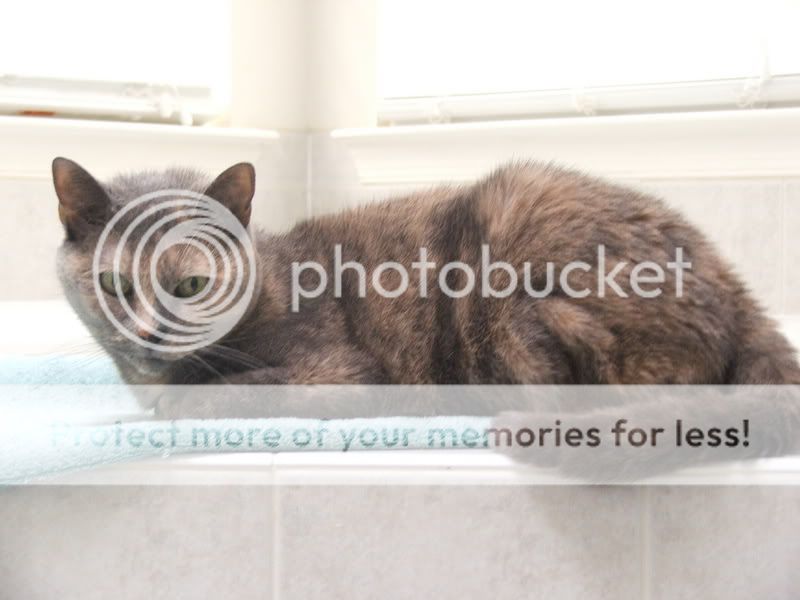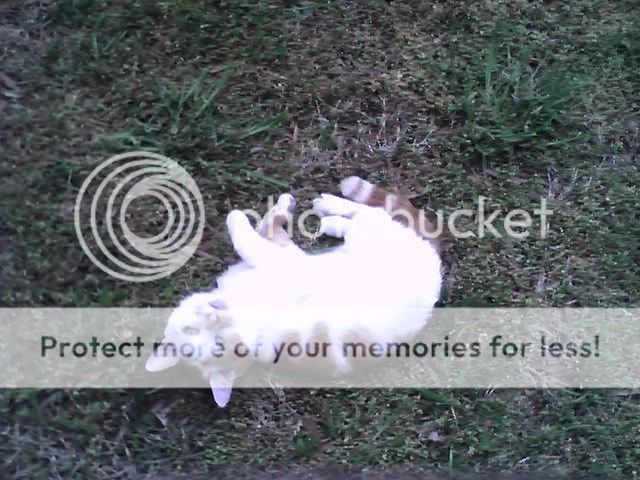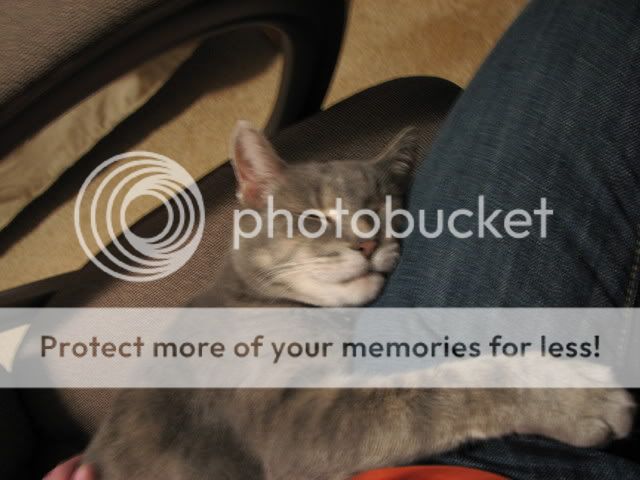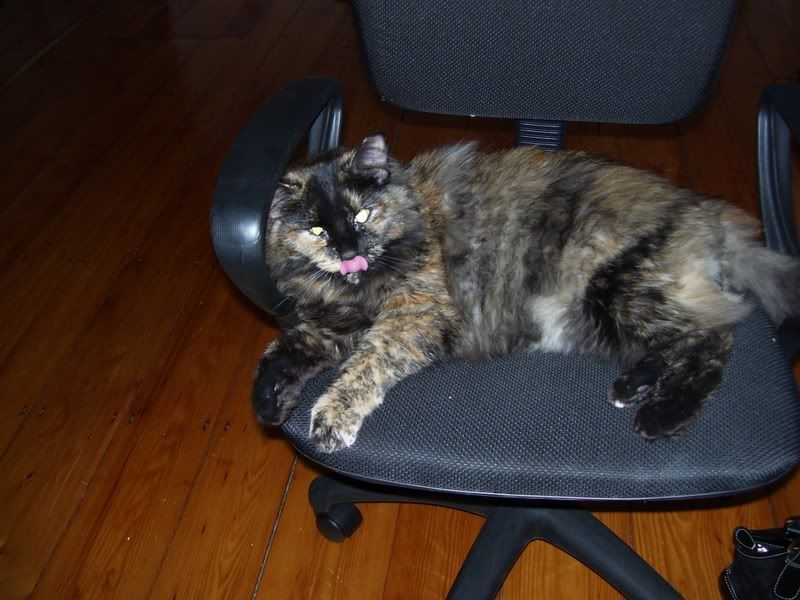Right, that's the bottom line...

My guess is her 'white' parent was carrying one dominant 'white masking' gene (which s/he passed along to two of its kittens) and therefore was white, even though s/he also carried the dominant ginger gene, 'O' (which Isabella inherited). As an outside possibility, s/he could've been a double recessive albino instead (that would still allow for the presence of a ginger gene), but that's a lot less likely statistically. (Or even less likely, my initial guess--a very heavily diluted ginger with no 'white masking' or albinism expressed at all.) Then those two black kittens, whether female ('oo'--double recessive, X-linked black) or male ('o'--single recessive, X-linked black), missed out on the 'O' ginger gene...either because one or both of them were girls and mom was genetically a 'white tortie', so to speak ('Oo' + either 'white masking' or albinism) with a spare 'o' to pass along, or else because they were both boys, in which case mom could've been either 'Oo' ('white tortie') or 'oo' (black)--since dad had only a Y chromosome to offer, and the Y doesn't carry either 'O' or 'o'. Who knows what the 'white' kittens may have been carrying genes for--if they
did have either one dominant 'white masking' gene or two recessive albinism genes, then it's quite possible that if they ever produced any offspring, there were some Isabella-type 'surprises' in the litter,

depending on what the other parent looked like.
For contrast, here's a pic of one of our cats, Lucia--less elegant-looking than Isabella, but as you can see, also a tortie:


Lucia's an adopted stray, so we don't know anything about her parents, but anyhow, as with any tortie, what you're seeing when you look at her is alternating patches of (recessive/'o'), black-based color from one parent, and (dominant/'O') ginger-based color from the other. Lucia isn't as diluted as Isabella is, so her black isn't grayed down, and her ginger looks redder than Isabella's. Isabella's 'gray' had to come from her black parent though, as it could only have had one (or two, if female) recessive genes for black ('o' or 'oo') to offer in order to be black, and 'gray' can't be produced by the ginger gene, no matter how diluted it is. Whereas her 'ginger' patches appear 'brownish' because they're diluted (and she probably also has less 'rufism' than Lucia does)--rather than the sort of 'brown' that comes from black pigment under the influence of 'browning' genes. Neither of them seem to show much browning of their black patches.

OK, I
really will shut up now, I promise...










 Maybe we could do it like Lemonade Stand pictures thread and have all the cats names with the owners names on the front page... and then when each new pic is added, it just updates on the front page.
Maybe we could do it like Lemonade Stand pictures thread and have all the cats names with the owners names on the front page... and then when each new pic is added, it just updates on the front page.  :slinksbackintoarmchairgeekdom:
:slinksbackintoarmchairgeekdom:




 OK, I really will shut up now, I promise...
OK, I really will shut up now, I promise...


